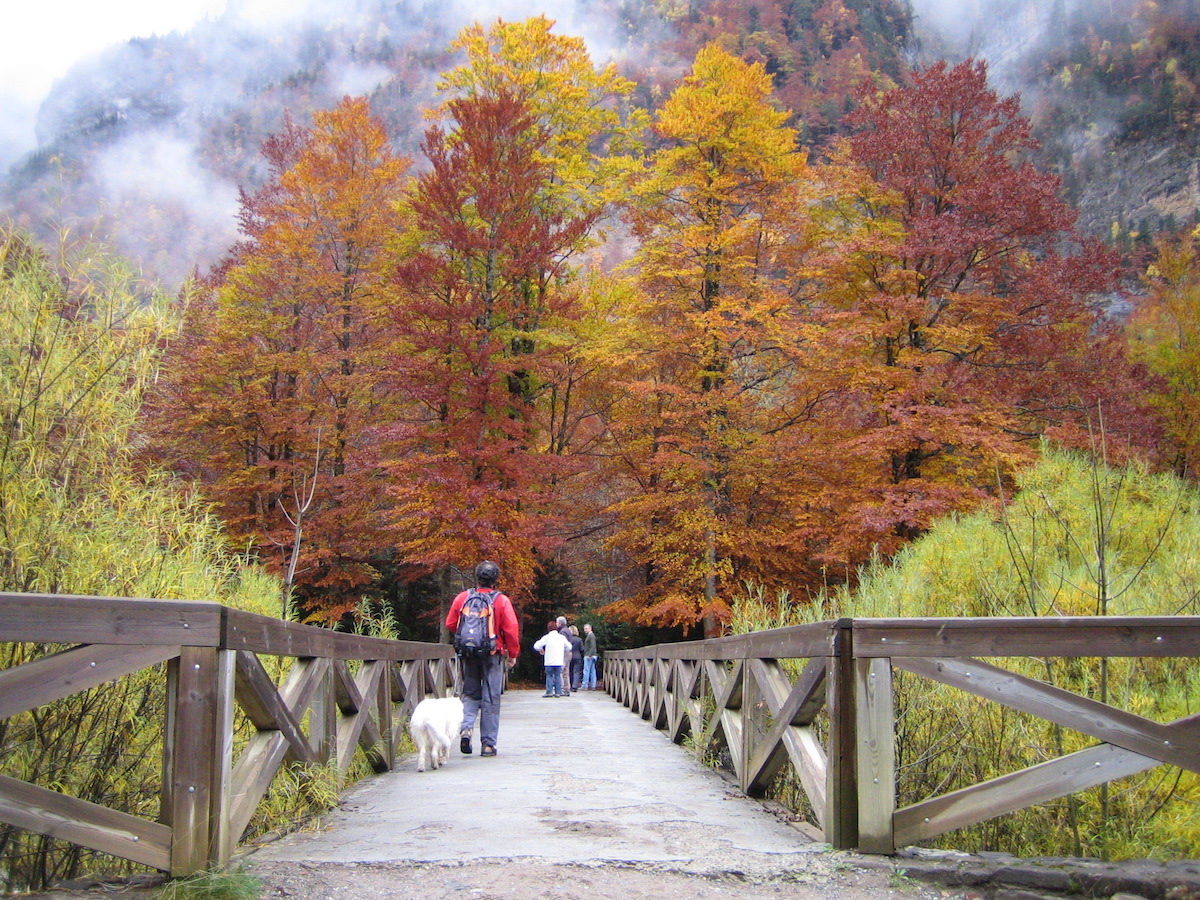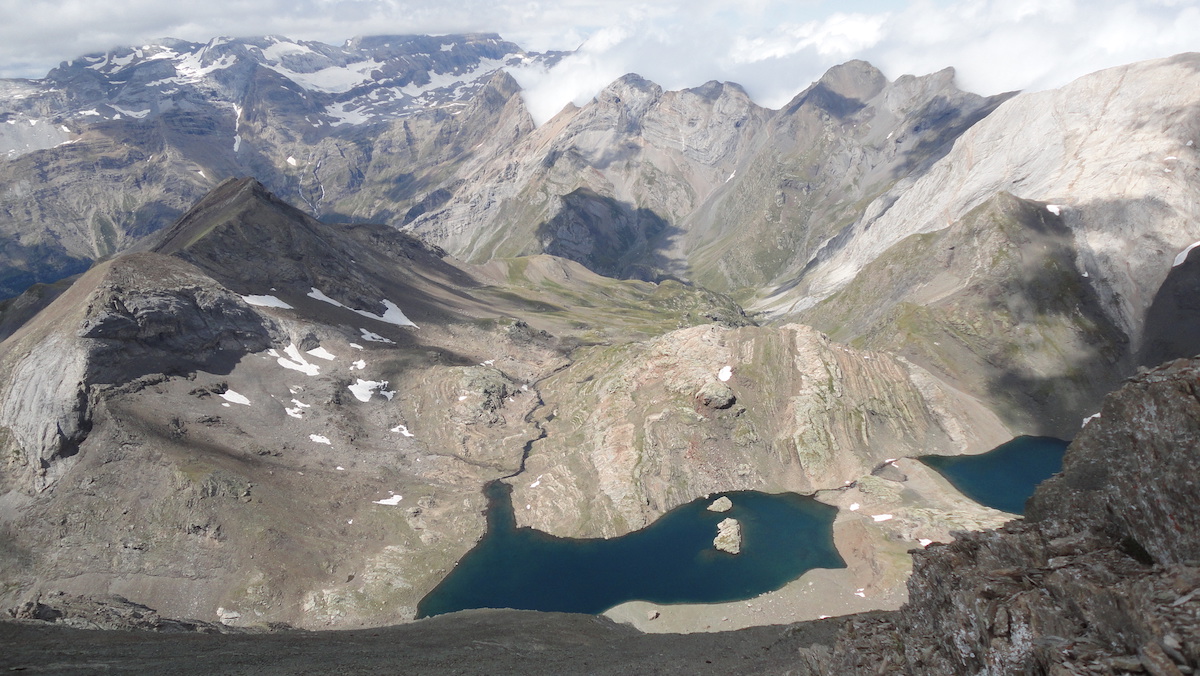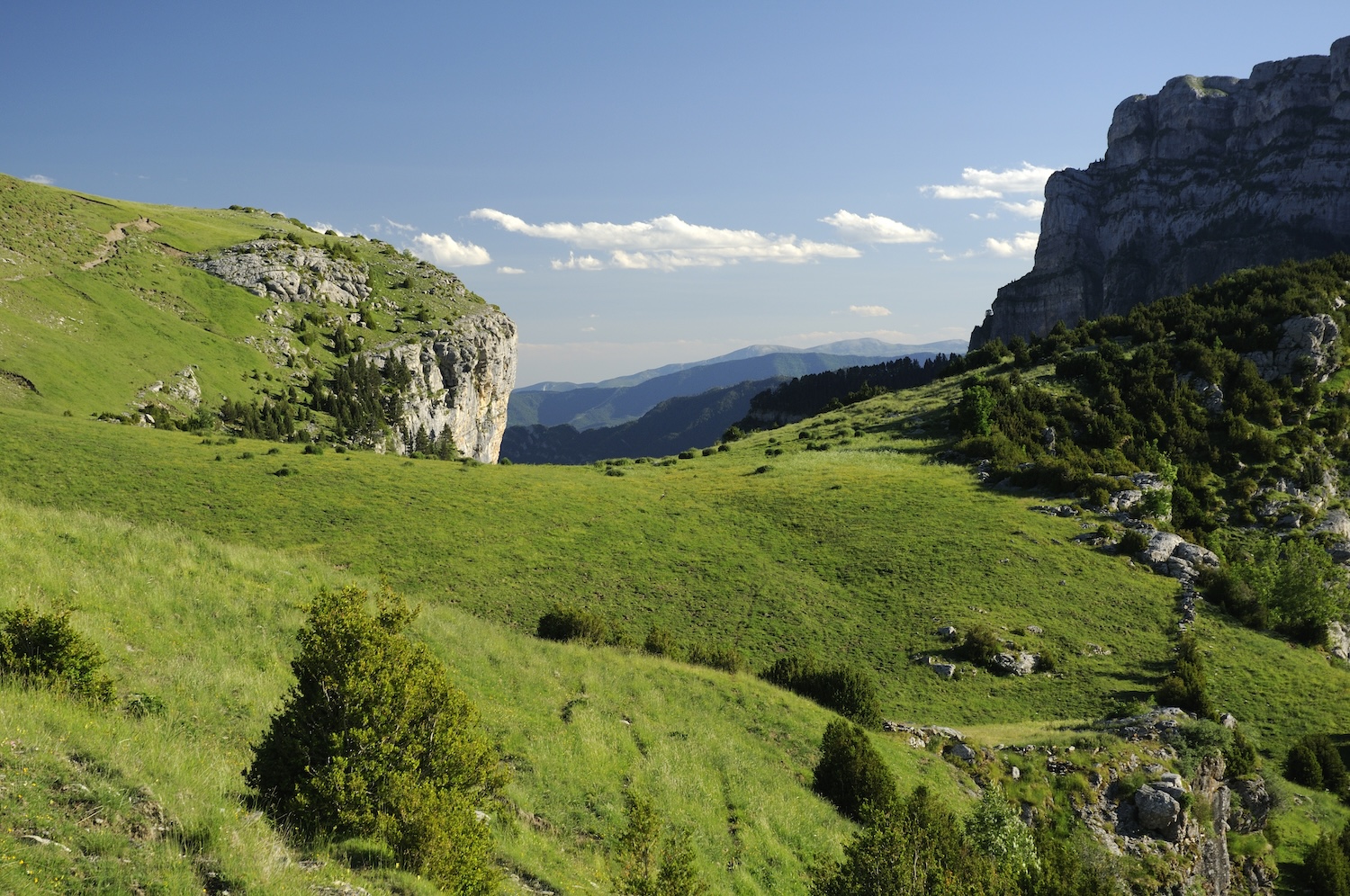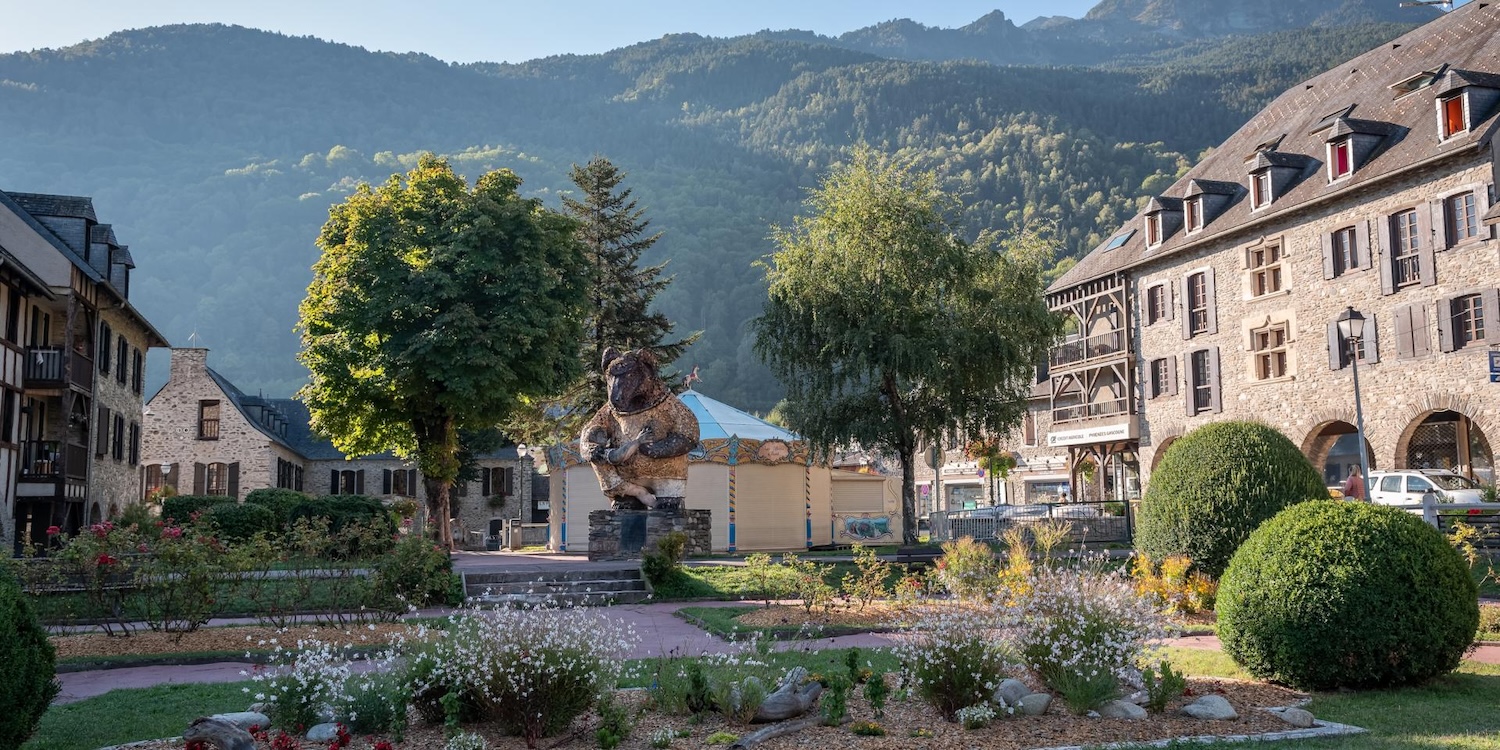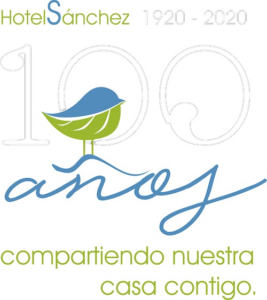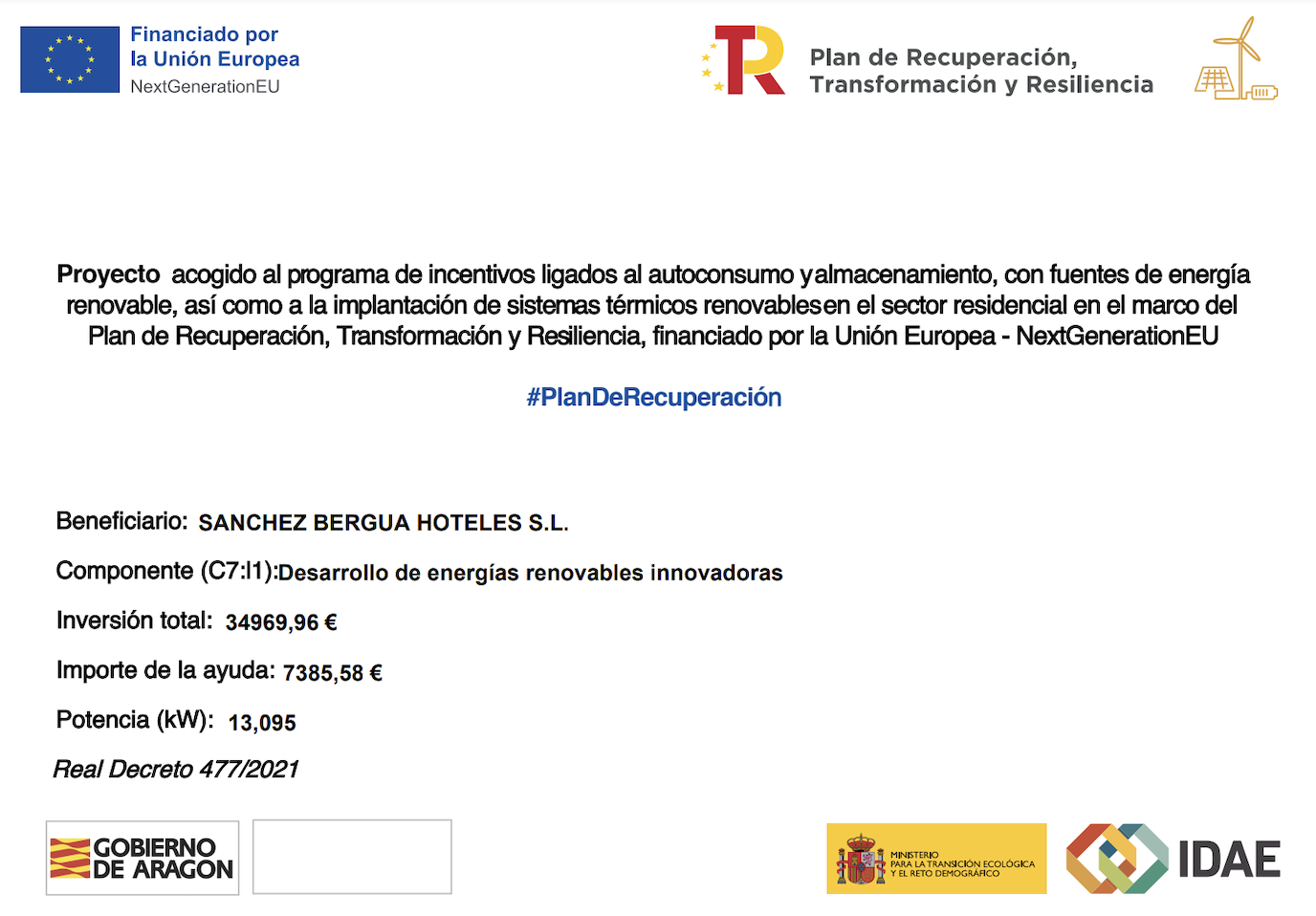Endless waterfalls, forest areas, beautiful meadows, trails, living rivers, magical lakes and gorges, caves and mountain ranges covered with fossils, to more Mediterranean valleys dotted with many towns and villages that comfort unique landscapes. Your visit to these lands requires a plan to be able to enjoy during your stay all that this region has to offer. We will only be able to enjoy a small part of the territory, just enough to get you hooked for good with its beauty, purity and serenity. We offer you a series of proposals broken down by valleys so that you can plan your stay in Sobrarbe:
Environment
The Sobrarbe region has 2200 kilometres of land to discover, a land of great contrasts with a national park and two natural parks. What sets Sobrarbe apart from other territories is the diversity of the landscape that we can enjoy, from large glaciers and cliffs to canyons and ravines.
FIRST DAY
Ordesa and Monte Perdido
First day: Visit The Ordesa y Monte Perdido National Park, the highest limestone massif in Europe, is part of the Ordesa-Vignemale Biosphere Reserve and, together with the glaciers on the French side of the Pyrenees, has been designated a World Heritage Site by UNESCO. The park comprises the Ordesa, Pineta, Añisclo and Escuain Valleys and any of these valleys require a daily visit. If you choose the Ordesa Valley, you will be amazed by the Cascada de la Cola de Caballo waterfall or the Gradas de Soaso.
SECOND DAY
Valle de Pineta
Second day: Enjoy the Pineta Valley, which includes the Monte Perdido Glacier, pine and beech forests, waterfalls, ravines and spectacular fauna (sarrios, marmots, bearded vultures, griffon vultures, golden eagles) and flora (purple bellflower, lady’s slipper). Along the way you can visit the town of Bielsa and the Municipal Ethnological Museum. Take advantage of this day to visit the impressive Barrosa Cirque, Lalarri, the mines of Liena de Chisagües, or the lake of Urdiceto, among others.
THIRD DAY
Gargantas de Escuain
Third day : Discover the Valley and the gorges of Escuain and the Añisclo Canyon where the rivers Yaga and Bellos flow in a spectacular orography that immerses you in a territory of unimaginable beauty. Leave your vehicle in the parking area and walk along the great cut of the Añisclo Canyon to San Urbez. From this area you can continue along the road and visit the villages of Fanlo and Nerin and take the bus adapted to the terrain to the balcony where you can enjoy a breathtaking view of Monte Perdido, Cilindro and Soum de Ramón.
FOURTH DAY
Posets Maladeta
Fourth day: Come to the Posets Maladeta Natural Park and enter the heart of the unique Gistain Valley, where the passage of time seems to pass more slowly and enjoy the authenticity of the territory, a valley in itself beautiful where the last extensions of glaciers survive next to Monte Perdido. From Gistain you will find the viewpoint of the Cruz de Puyadase with a magnificent view, the meadows of Viados and its typical “bordas”, La Basa de la Mora….. areas not to be missed.
FIFTH DAY
Valle de Puértolas y Tella.
Fifth day : Discover the Puértolas Valley and Tella. An area that still shelters a whole world of beliefs and mythology around giants, witches, superstitions and myths. In Tella, you can enjoy a walk along the Romanesque Hermitage Route and complement it with a visit to the Visitor Centre and the Cave Bear Museum. Don’t forget to stop off at the famous Dolmen de Tella and visit the cave of the cave bear. It is worth going to Revilla, a natural paradise where the bearded vulture lives and is easy to spot. On your return, enjoy a swim in the waters of the Cinca River, with direct access to bathing areas or go to the Gorgas del Rio Bellos at the height of Puyarruego, a unique experience.
SIXTH DAY
We are going to France
Sixth day: We are going to France, just 45 kilometres away, we can cross into the neighbouring country through the Bielsa tunnel to get to know the other side of the Pyrenees on the north side with the great contrasts with respect to the Spanish territory, visit the town of Saint Lary, a typical French village with great charm, you can visit its famous lakes and even enjoy a thermal centre. A second option is to visit the city of Lourdes, a sanctuary of worldwide pilgrimage and enjoy the route by seeing the emblematic passes of the Tour de France.
SEVENTH DAY
Parque Natural de los cañones
Seventh day : Another very interesting proposal is the visit to the Natural Park of the canyons and Sierra de Guara whose landscape values are the result of fluvial erosion and which has given rise to spectacular canyons, mallos, rocks and caves. This area is very popular with adventure companies for canyoning, and you can do this activity here. Enjoy a short excursion to the caves with cave paintings and visit the beautiful town of Alquezar, where you can also enjoy a natural bathing area at the Bierge waterfall. On your way back, two stops are a must, in Colungo to visit the interpretation centre dedicated to cave art and in Lecina, to see the impressive “Encina Milenaria”, a huge 600 m2 specimen.
EIGHTH DAY
Valle de Bujaruelo
Eighth day : Another very attractive option is the visit to the Bujaruelo Valley where water is always present as in the Ordesa National Park, jumping in the form of waterfalls and ravines. The Vignemale presides over this valley and has been declared a “Biosphere Reserve”. You can visit the remains of the hermitage of San Nicolás next to the bridge of the same name and for the more daring, climb the Bujaruelo pass and enjoy the Circo de Gavarnie. A highly recommended area for rafting between the towns of Torla and Broto.
On your way back you can visit several of the villages that make up the Ara Valley such as Janovas or La Solana, villages abandoned in the 60s before the imminent creation of the reservoir that never was, or make a stop in the town of Boltaña and visit its old town, also again along the Ara river, we find natural bathing areas such as the gorges of Balupor.
NINTH DAY
Biello Sobrarbe
Ninth day : Get lost in the Biello Sobrarbe and enjoy the geological heritage of Sobrarbe. In any of the excursions you do in this area, you will be “stepping on” fossil remains, visit the palaeontological museum in La Mata, the watchtower in Abizanda, the church in Olson, declared a Historic-Artistic Monument and known in the region as “The Cathedral of Sobrarbe”, the Sanctuary of Santa María de la Nutella, as well as the Romanesque churches in Santa María de Buñuel and Santa María de Buñuel, the Sanctuary of Santa María de la nuez, as well as the Romanesque churches of Santa María de Buil, Latorrecilla and Guaso, and place yourself in the centre of the Guaso esconjudadero to scare off storms. From the top of the hillock, admire the magnificent views of the Ara river that runs from Boltaña to Ainsa. On the way back, you can find a pool in the river Ena where you can end the day in a pleasant way.
TENTH DAY
Peña Montañesa
Tenth day: Changing landscape we can enter the Valley of Bajo Peñas, La Peña Montañesa, a massif belonging to Sierra Ferrera, which shelters under its mantle several villages of Laspuña, Pueyo de Araguas and La Fueva, making this area a fascinating and unique place, where it is common to see birds of prey flying under the protection of the imposing Peña Montañesa. Not to be missed:
San Juan de Toledo and its Lombard Romanesque church and La Fuensanta in Laspuña. A visit to the Monastery of San Victorián, the oldest in Spain, was for a millennium the cultural and spiritual centre of Sobrarbe and if we continue in this area, take us to the hermitage of La Espelunga. If you feel strong, climb the Peña Montañesa, the reward is priceless, impressive views of a large part of the Sobrarbe region.
On your return, enjoy a dip in the warm waters of the river La Nata as it passes through Arro.
ELEVENTH DAY
Sobrarbe
Eleventh day: Once again, Sobrarbe surprises us with the Fueva Valley. The most flat area of the region, this municipality has more than 20 villages distributed all over the valley. Come to Mediano to see the reservoir that never finishes covering its tower, enjoy a canoe ride on its calm waters, or if you prefer, we recommend the route of the entremón that starts in the town of Liguerre del Cinca, passes by the Mediano dam and ends in the town of Palo. Other important places to visit in this valley are the church and castles of Samitier, the fortified village of Muro de Roda, a 12th century walled enclosure which is listed as a National Historic Monument. The church of Troncedo.
TWELFTH DAY
Comarca de Sobrarbe
Twelfth day: The Sobrarbe region is strategically located between France to the north, the Benasque Valley to the east, the Tena Valley and the Jacetania Valley to the west, and the Somontano Valley to the south. During your visit to the region you can spend a day in any of these valleys. You can also go to Somontano to visit one of the wineries that exist in the Somontano wine Denomination of Origin, or if you prefer, to the Torreciudad Sanctuary in Grado.


